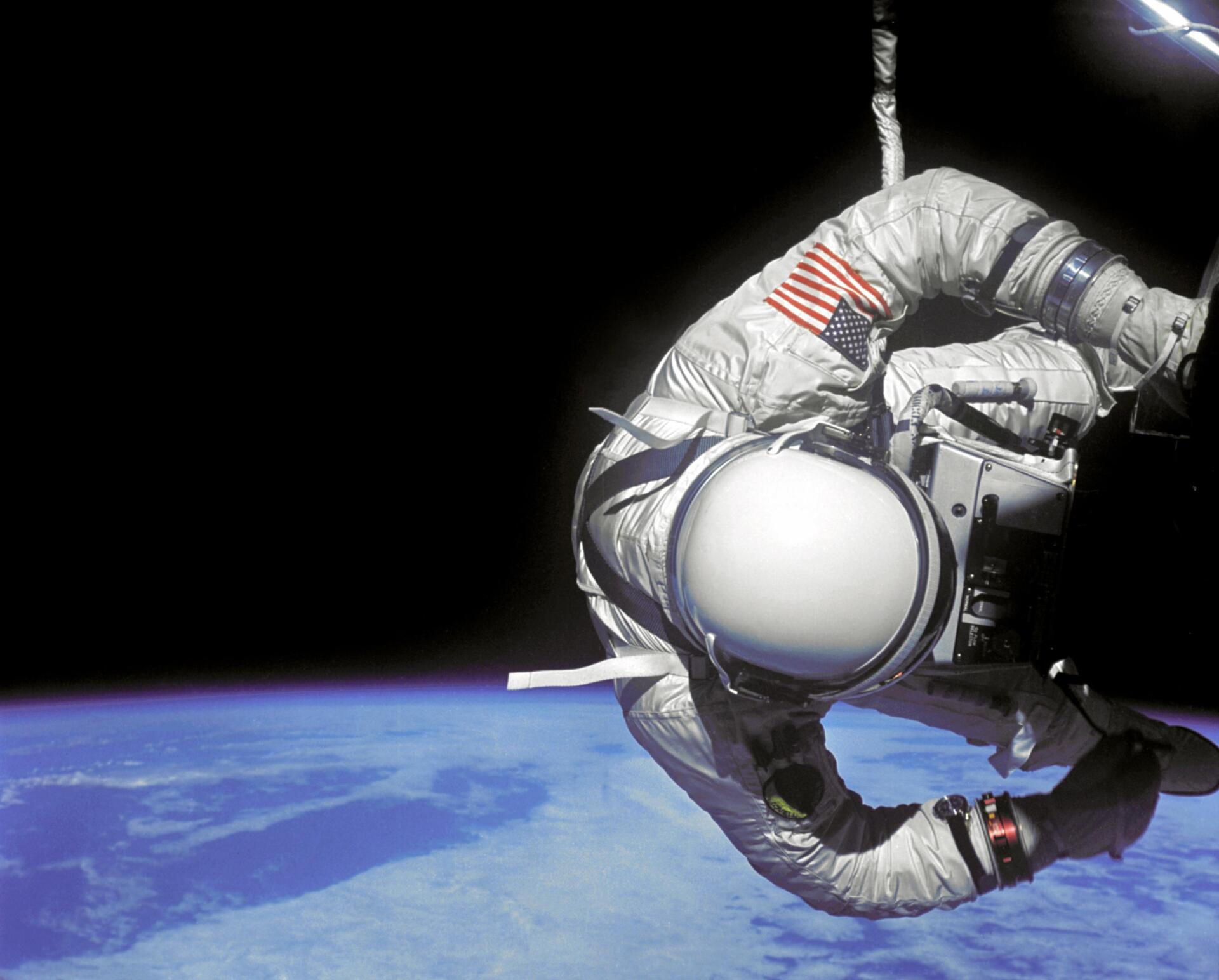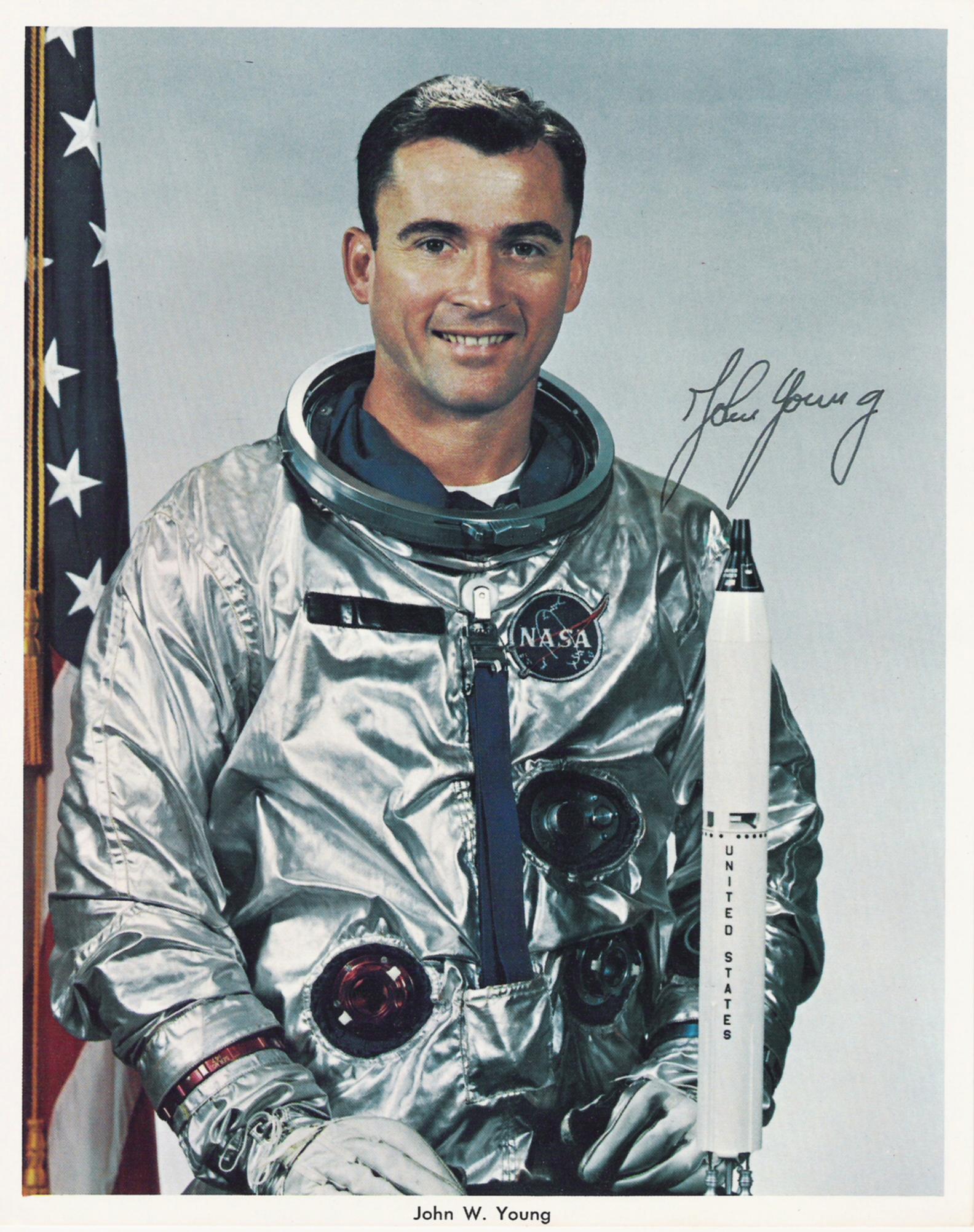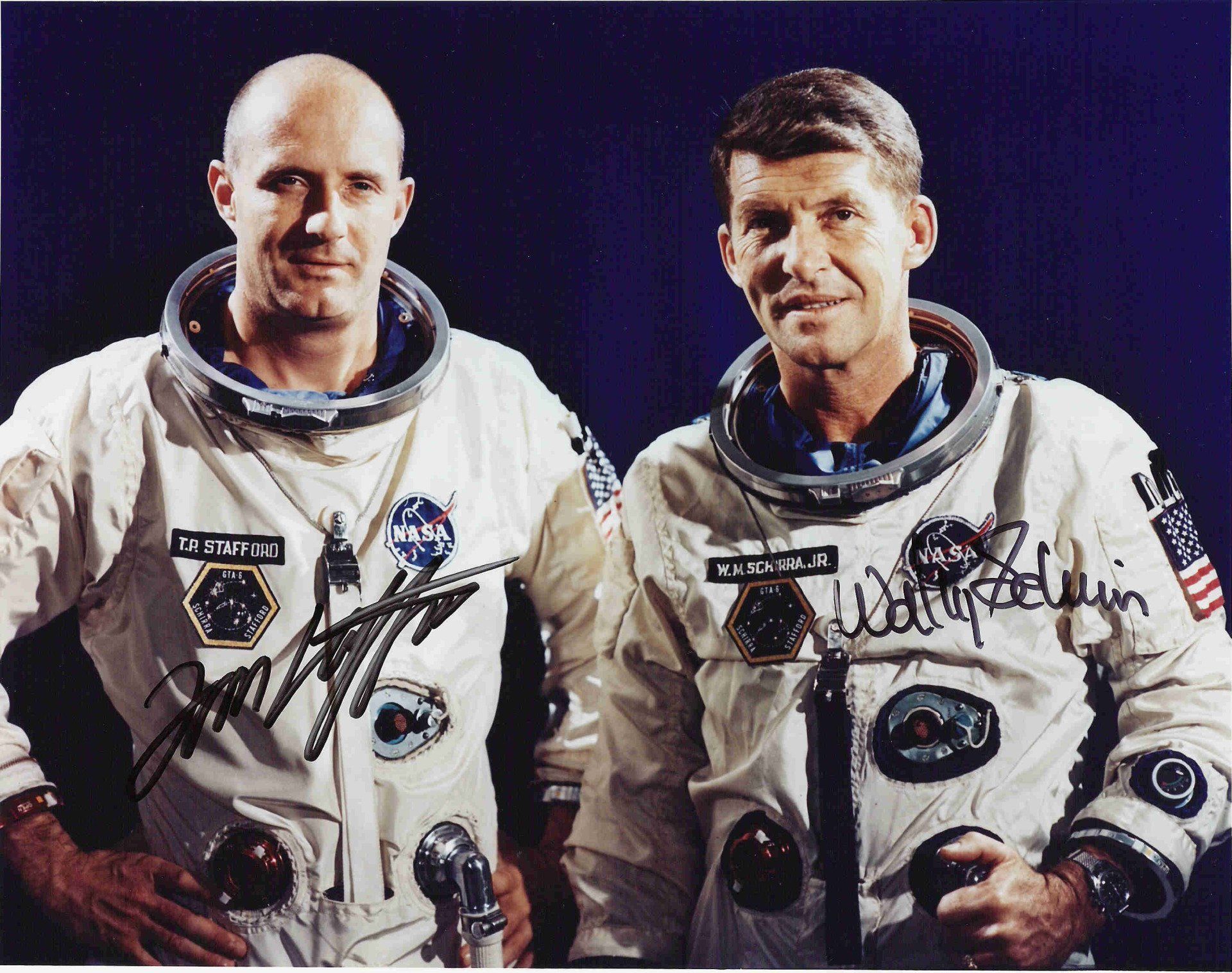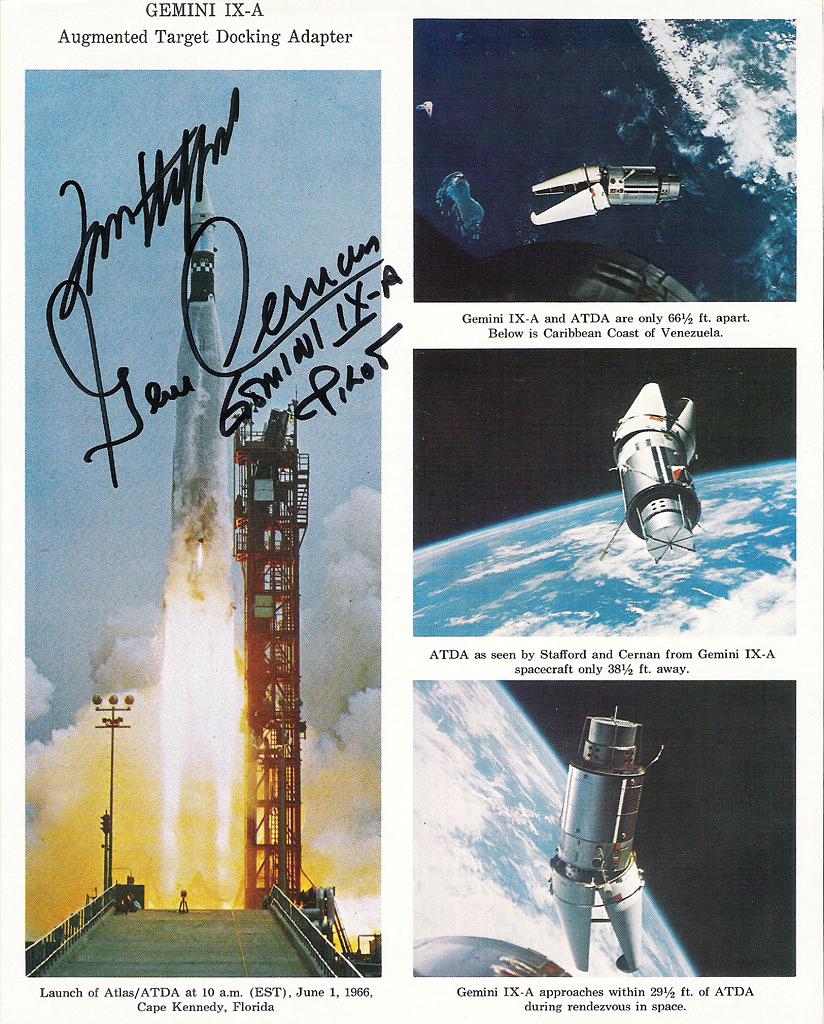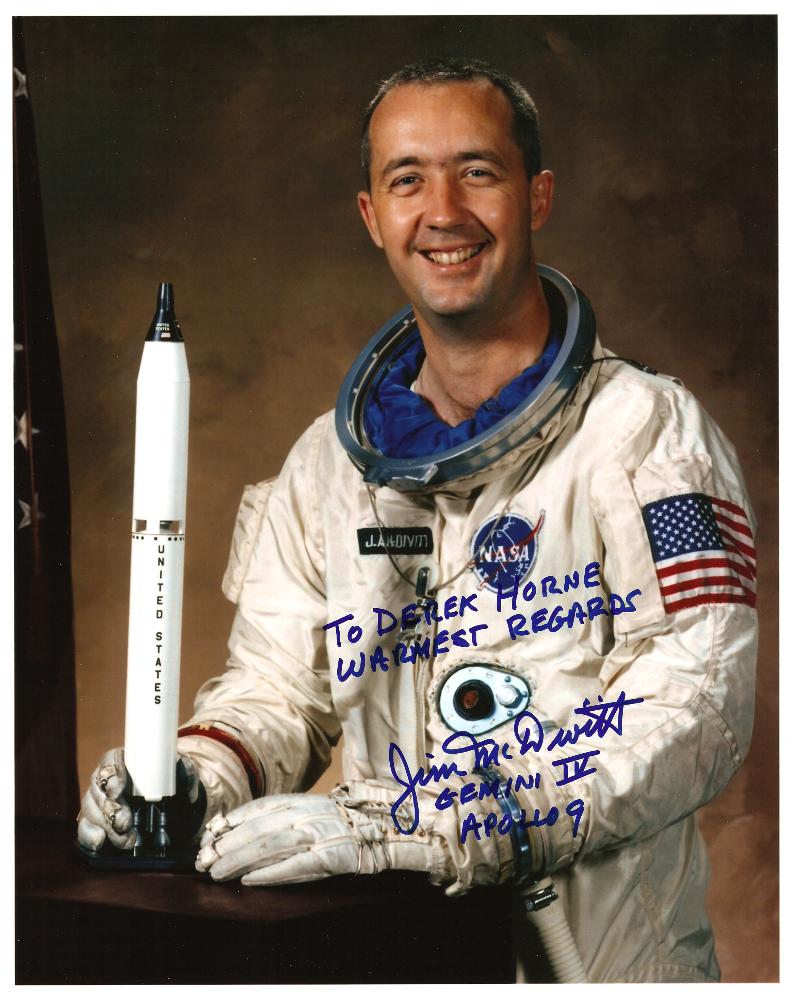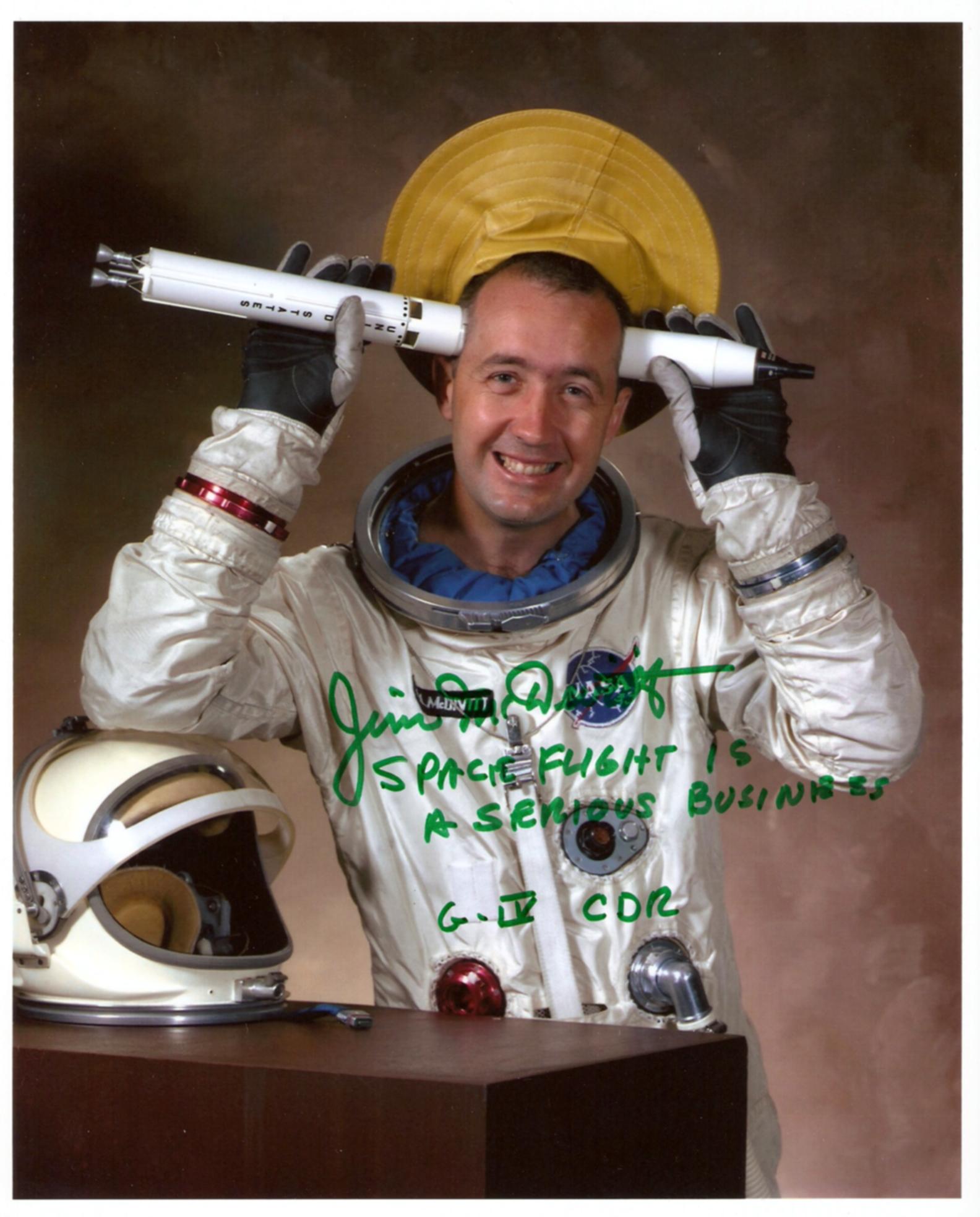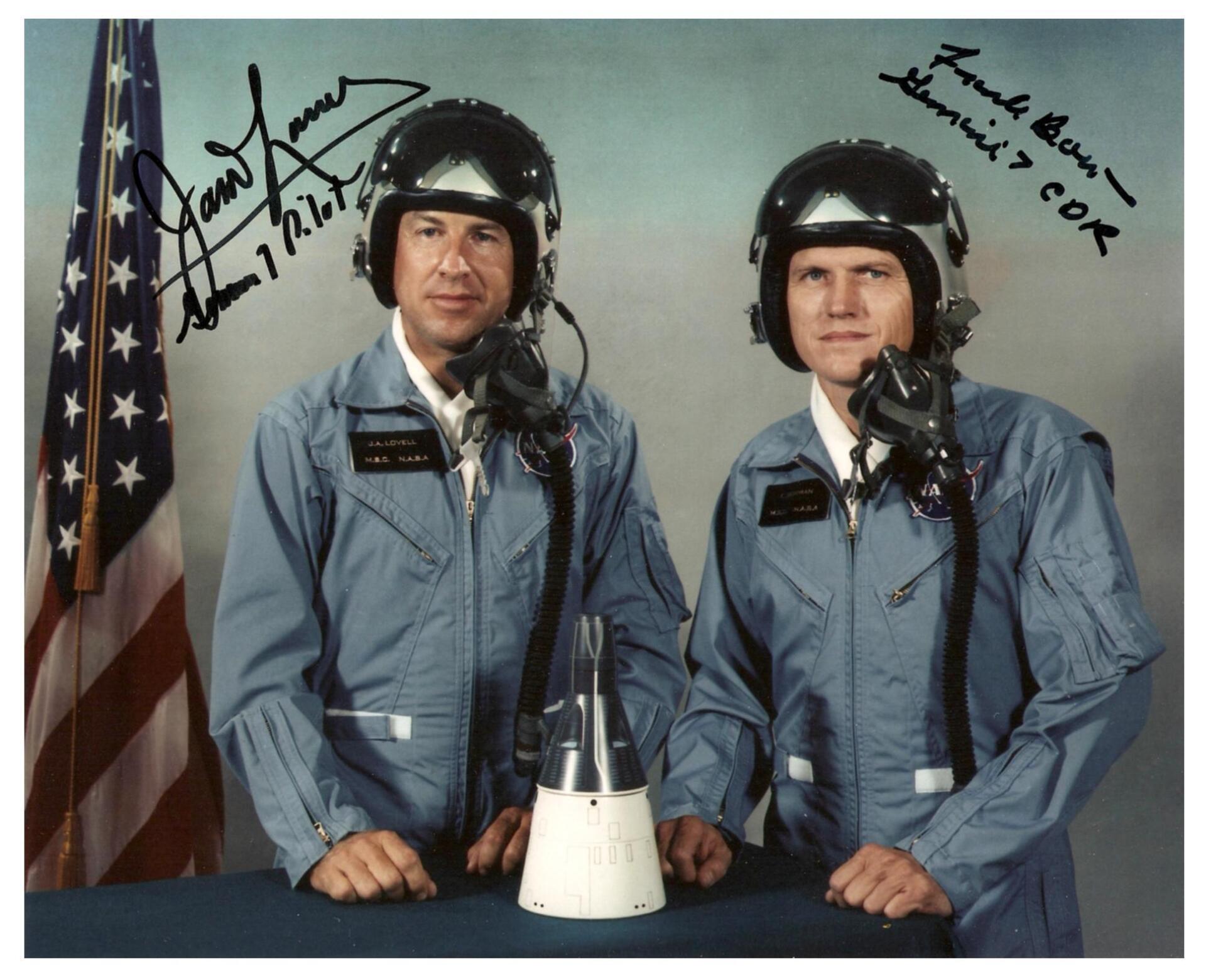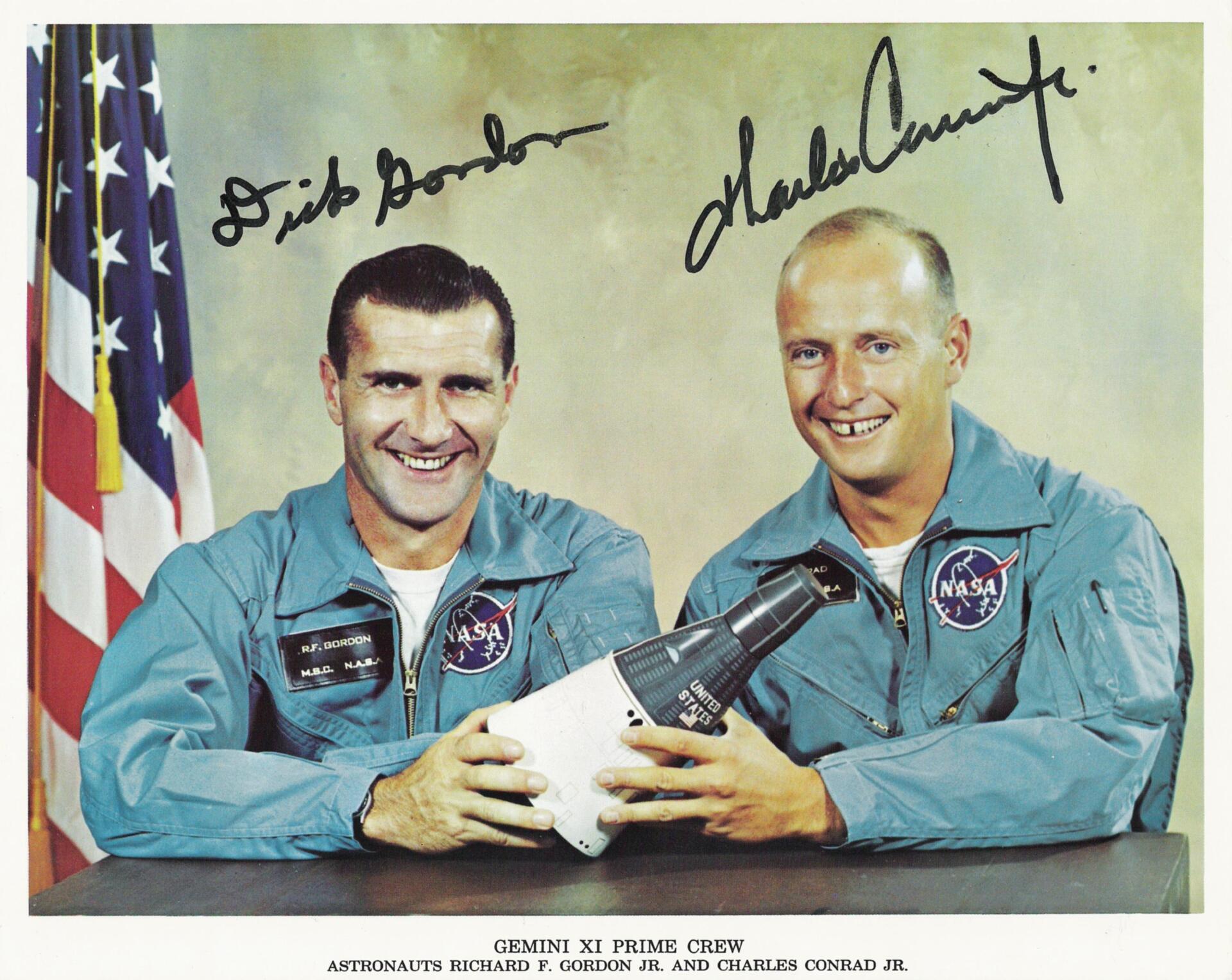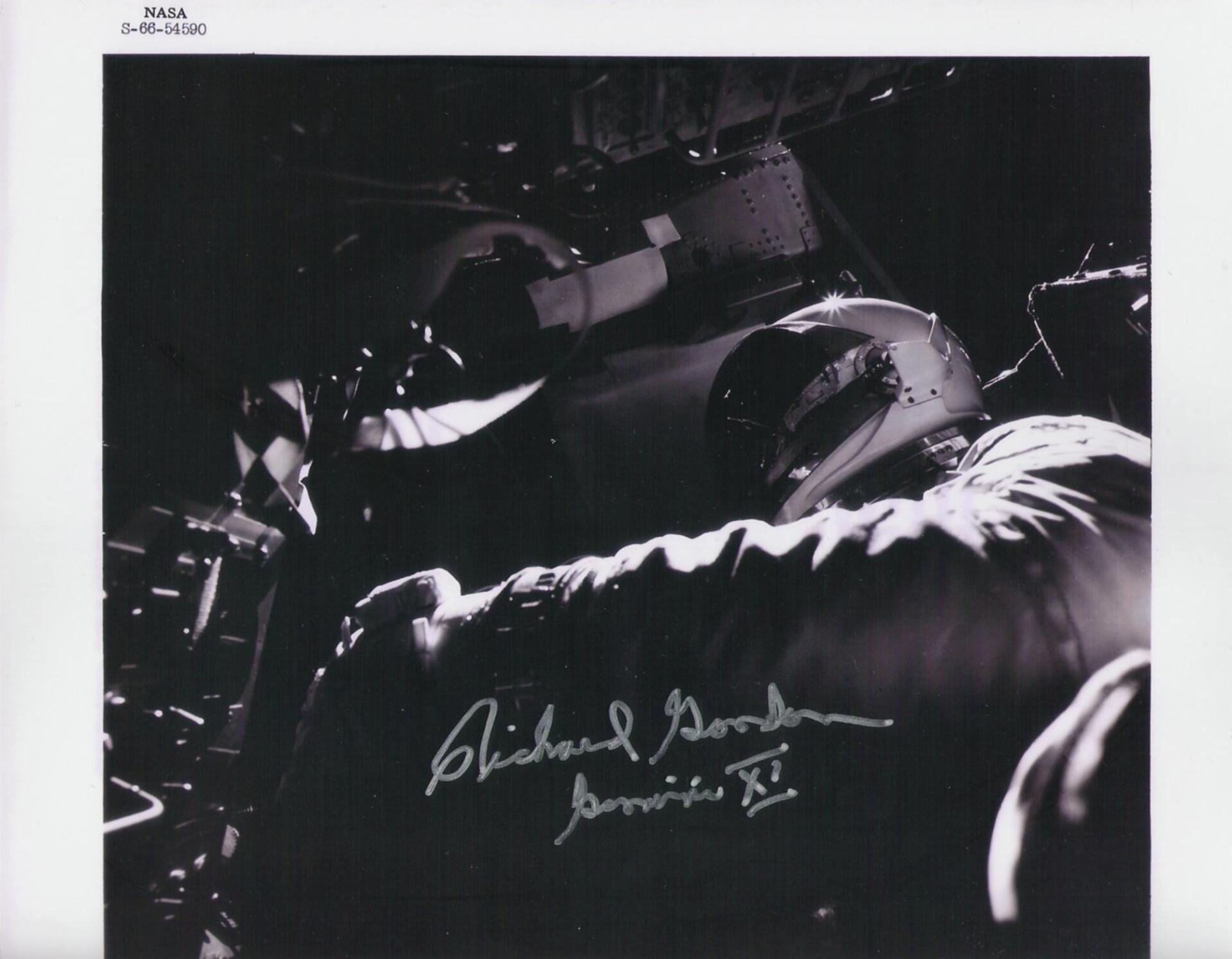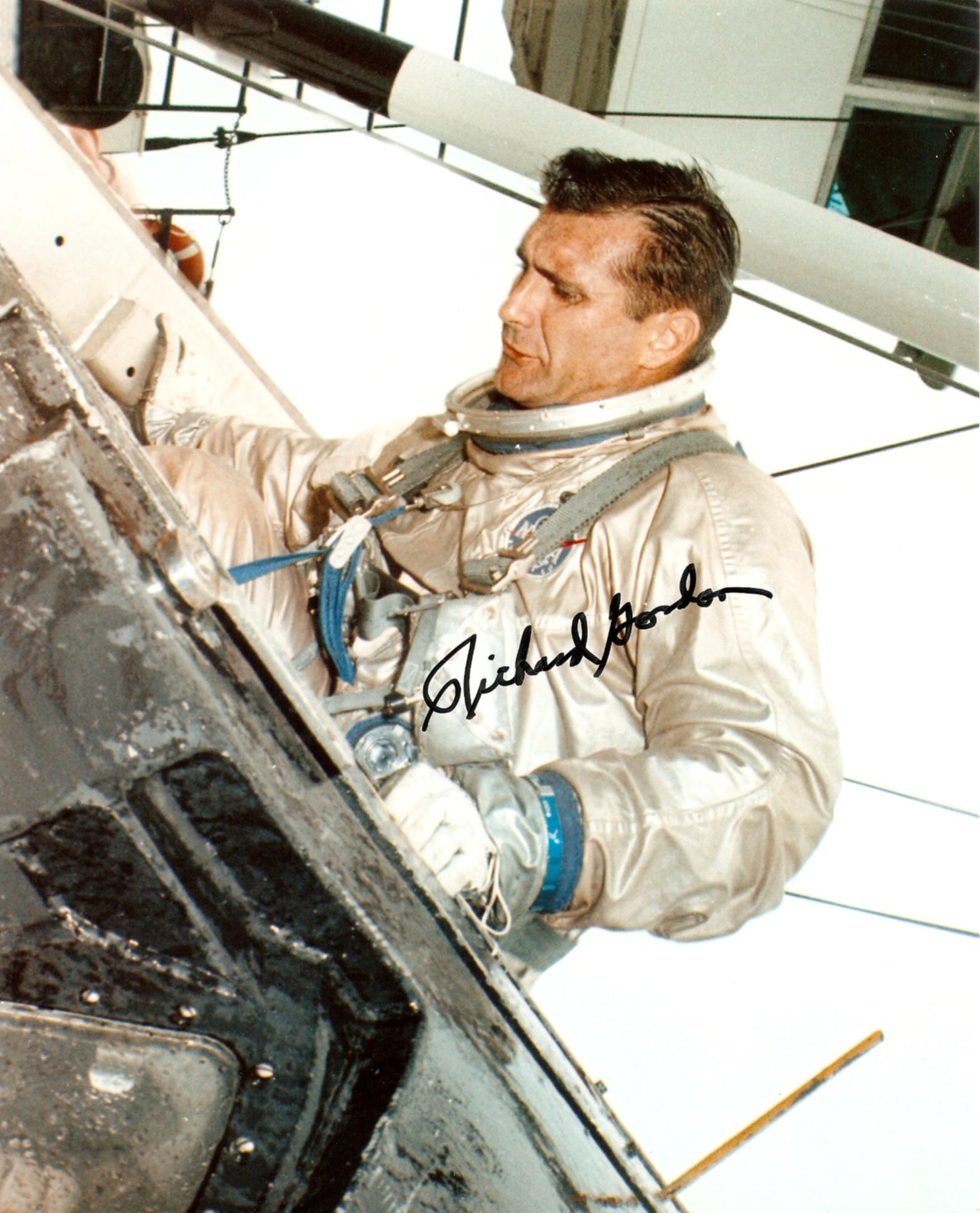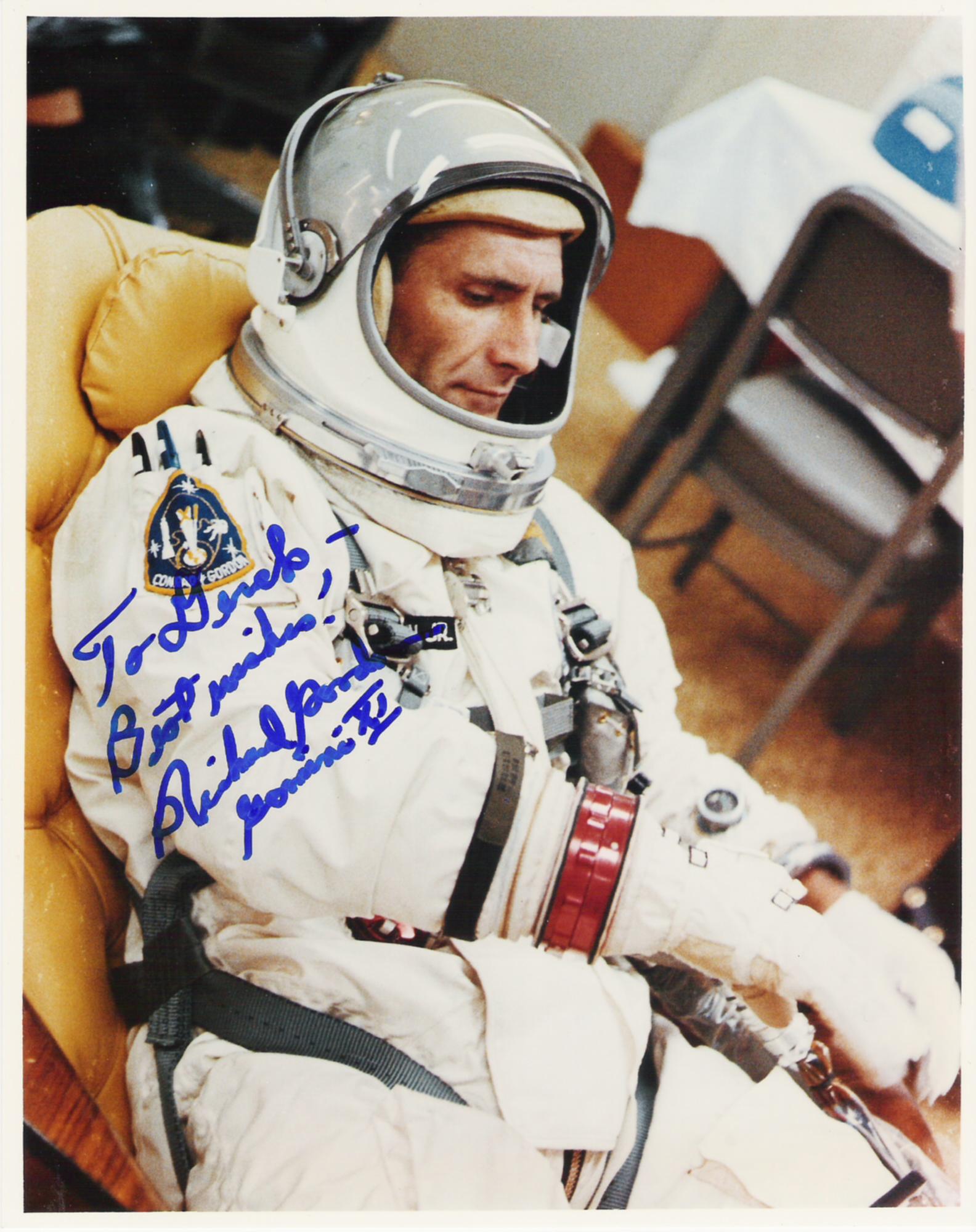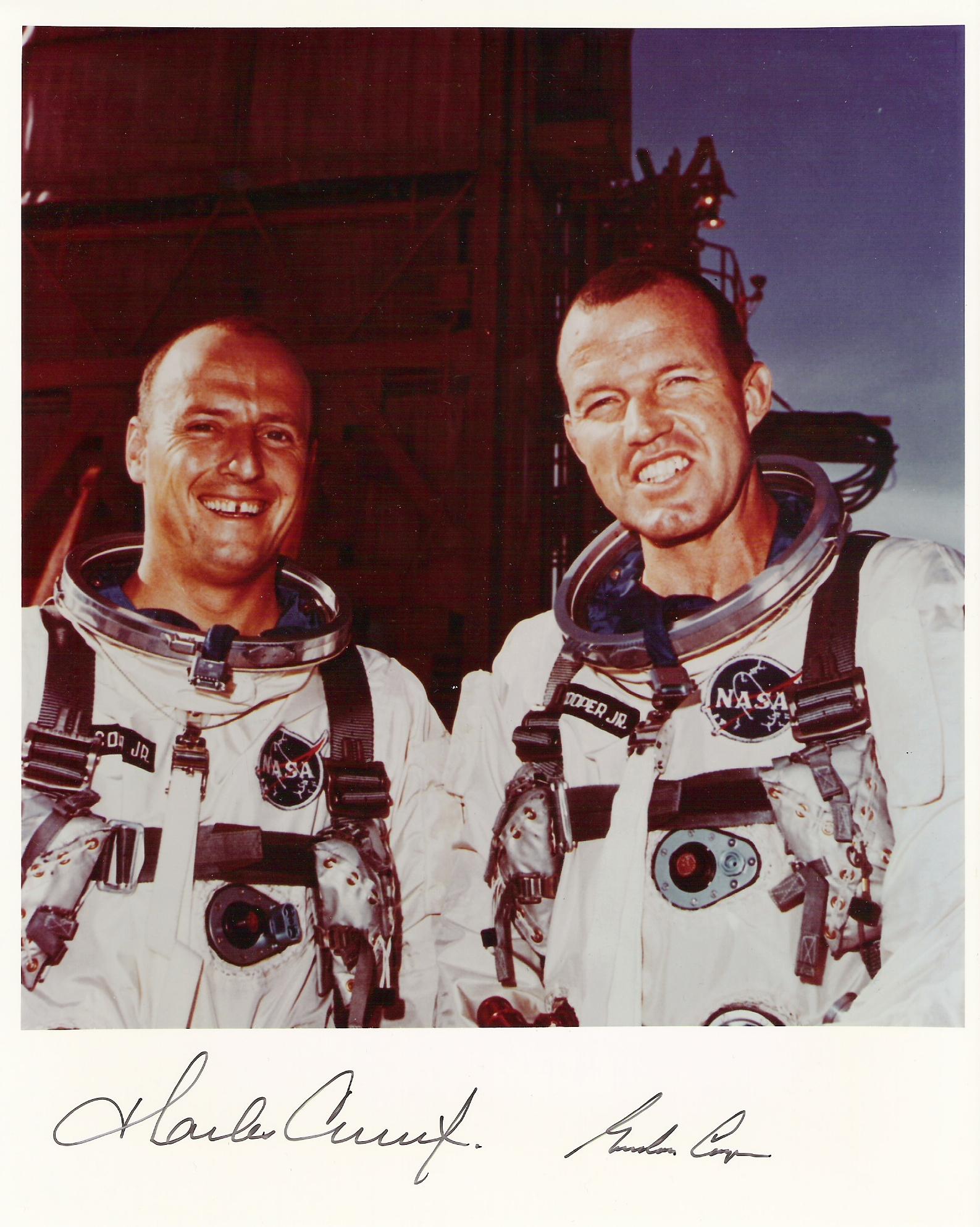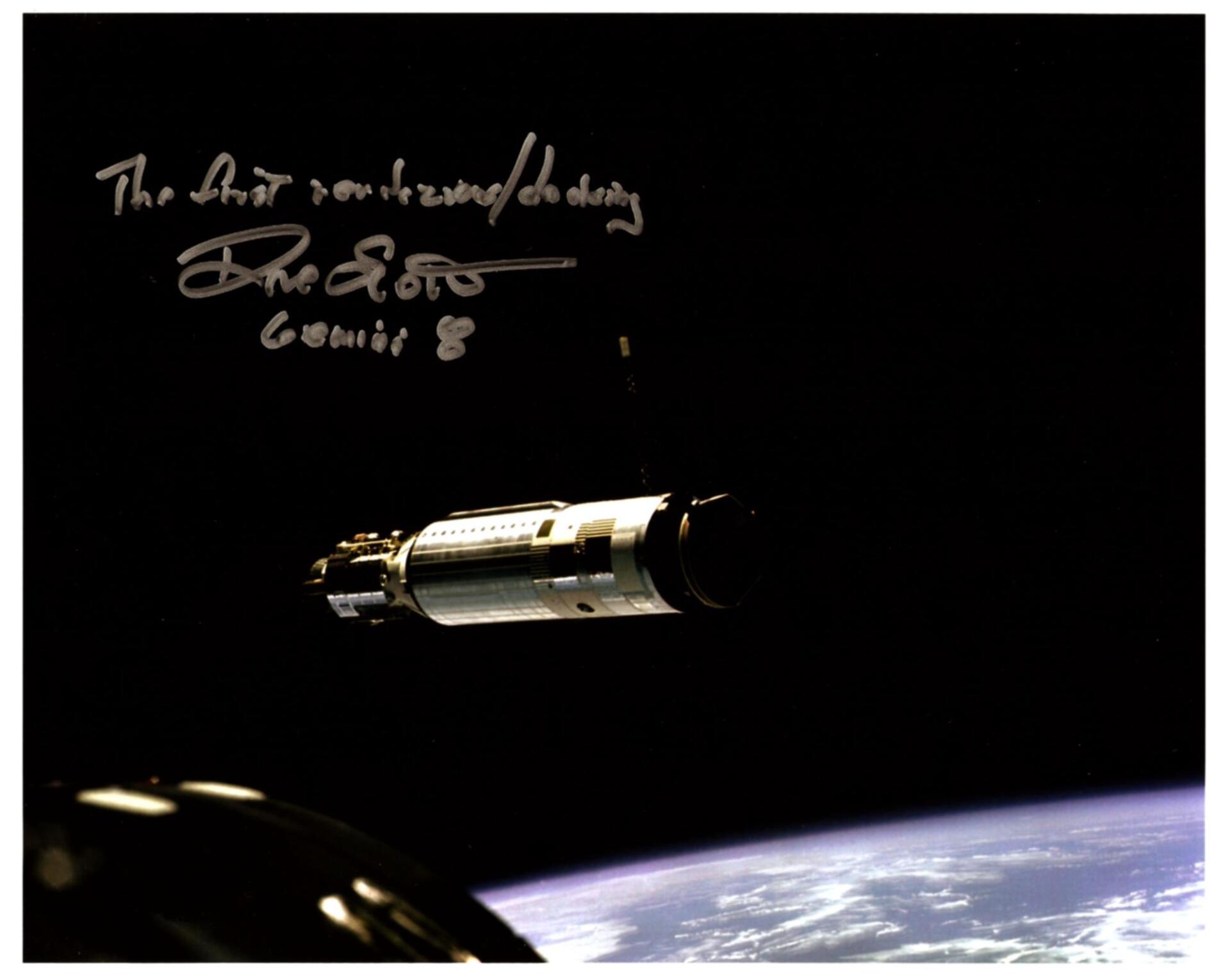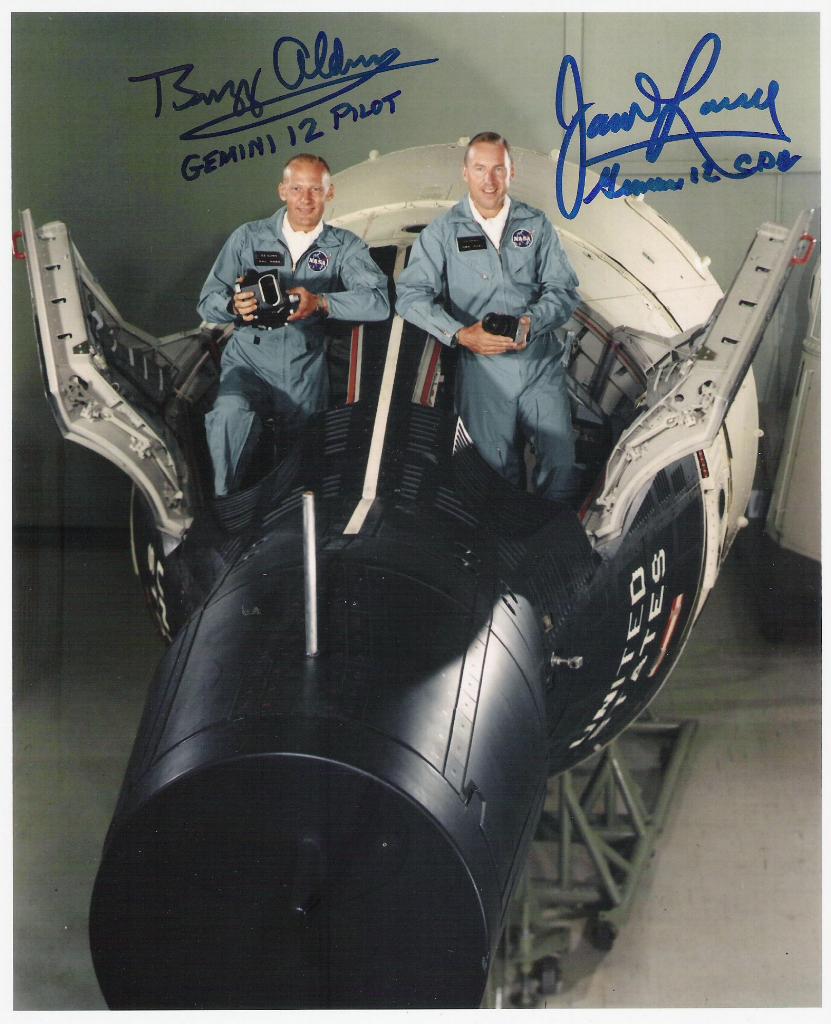Gemini Program Autographs
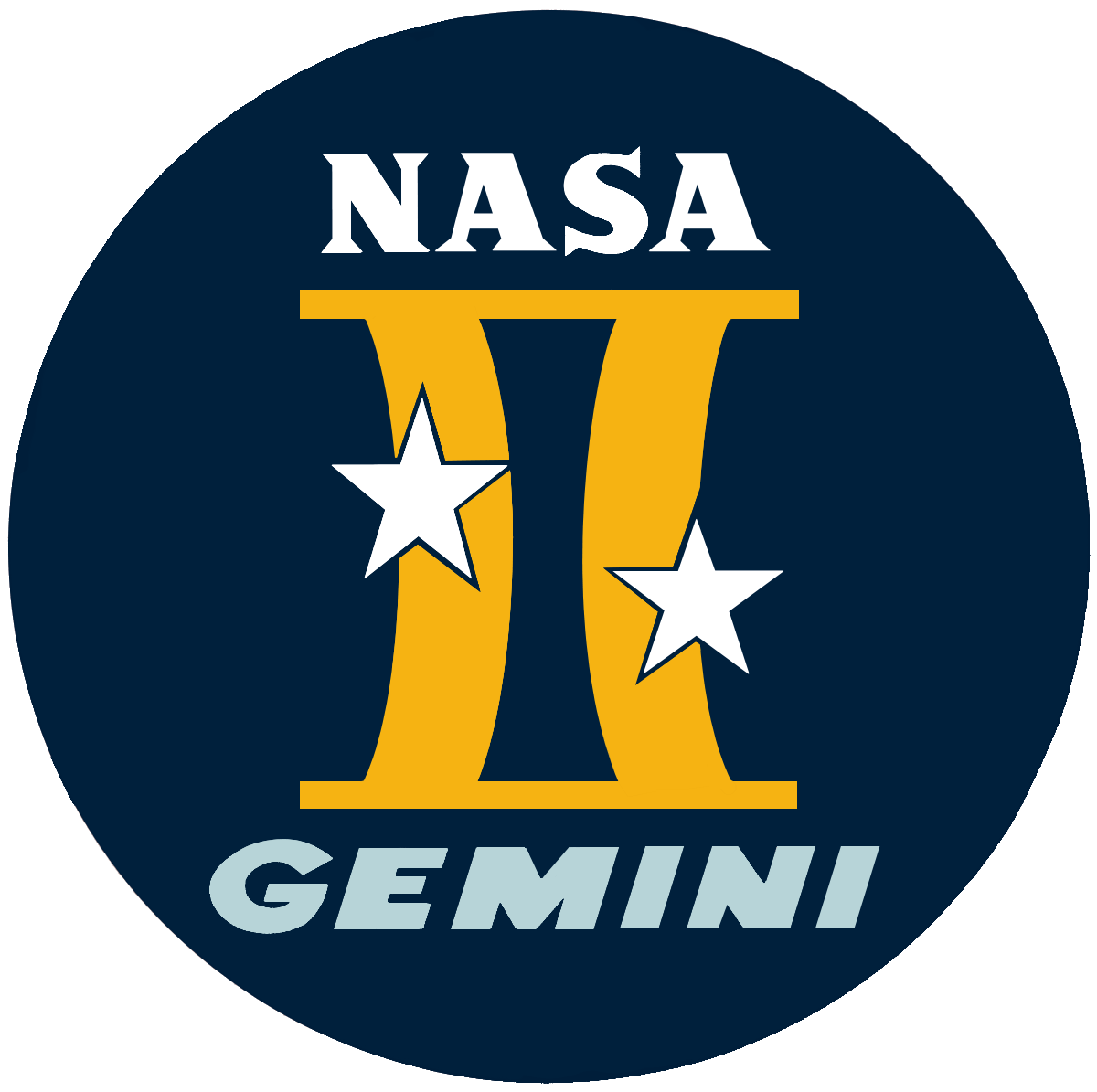
The Gemini program consisted of a total of 19 launches, 2 initial un-crewed test missions, 7 target vehicles, and 10 crewed missions, each of which carried two astronauts to Earth orbit. Designed as a bridge between the Mercury and Apollo programs, the Gemini program primarily tested equipment and mission procedures and trained astronauts and ground crews for future Apollo missions.
The general objectives of the program included: long duration flights; testing the ability to manoeuvre a spacecraft and to achieve rendezvous and docking of two vehicles in Earth orbit; training of both flight and ground crews; conducting experiments in space; extravehicular operations (stand-up sessions and spacewalks); active control of re-entry to achieve a precise landing; and onboard orbital navigation. The Gemini missions lasted for periods ranging from 5 hours to 14 days.
Astronauts accomplished many things on the Gemini missions. The first flight to carry astronauts was Gemini 3 (also known as Gemini-Titan 3 or GT-3). That flight tested the new vehicle. The Gemini 4 mission included the first U.S. spacewalk. Gemini 5 stayed in orbit for more than a week. The Gemini 6A and 7 missions were in space at the same time and met each other in orbit. Gemini 7 stayed in space for two weeks. Gemini 8 connected with another unmanned spacecraft in orbit.
The Gemini 9 mission tested different ways of flying near another spacecraft. It also included a spacewalk. Gemini 10 connected with another spacecraft and used its engines to move both vehicles. The Gemini 11 mission flew higher than any NASA mission before. The last mission, Gemini 12, solved problems from earlier spacewalks.

NASA Group 1 & Group 2 Astronauts
- Back row (Group 2 - "The New 9") left to right; Ed White, Jim McDivitt, John Young, Elliott See, Charles "Pete" Conrad, Frank Borman, Neil Armstrong, Tom Stafford & Jim Lovell.
- Front row (Group 1 - "The Mercury 7") left to right; Gordo Cooper, Gus Grissom, Scott Carpenter, Wally Schirra, John Glenn, Alan Shepard & Deke Slayton.
